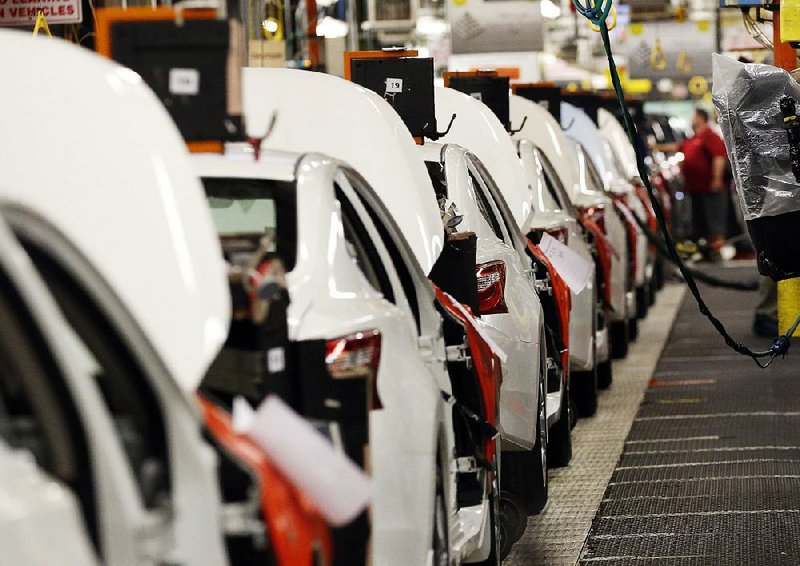U.S. industrial production rose in June at the fastest pace in 10 months, led by a strong rebound in auto production.
The Federal Reserve said industrial production increased 0.6 percent last month, the best showing since a similar gain in August. In May, industrial production had fallen 0.3 percent.
The key manufacturing sector posted a 0.4 percent rise, reflecting a jump in the output of motor vehicles and parts, which rose by 5.9 percent after having fallen by 4.3 percent in May.
Output at the nation's utilities rose 2.4 percent as electricity production increased as higher-than-normal temperatures increased demand for air conditioning. Output in the mining sector edged up 0.2 percent, the second small increase after eight straight monthly declines.
The June gain in industrial production was stronger than the 0.2 percent increase that many economists had been forecasting.
Jennifer Lee, senior economist at BMO Capital Markets, said the report offered a glimmer of hope for better days ahead for industrial production.
"This latest broad-based gain hints that we're starting to see some upward momentum," she wrote in a research note.
Both manufacturing and mining have struggled over the past year. Mining, which includes oil production, has been battered by a steep drop in oil prices that triggered sharp cutbacks in exploration and production. Manufacturers have struggled with falling export sales, reflecting global economic weakness and a strong dollar, which had made U.S. goods more expensive overseas.
Despite the rise in June, industrial production has fallen for three consecutive quarters, dropping at an annual rate of 1 percent in the April-June period after declining at a 1.8 percent rate in the first quarter.
Inventories held by U.S. businesses rose modestly in May, as retailers stocked up to meet customer demand.
The Commerce Department said Friday that U.S. business inventories rose 0.2 percent in May after edging up 0.1 percent in April. Sales rose 0.2 percent.
Manufacturers, pinched by weak global demand and a strong dollar that makes their products costlier in world markets, left inventories unchanged. Over the past year, factory inventories were down 3.0 percent.
Meanwhile, retailers raised inventories by 0.5 percent in May and 6 percent over the past year, a sign they are confident that American shoppers will continue to spend.
Auto dealers expanded inventories by 0.7 percent, furniture and appliance stores by 0.5 percent and sellers of building materials and garden supplies by 1.1 percent. But department stores cut inventories by 0.7 percent.
A slowdown in restocking empty shelves has dragged down economic growth three straight quarters and helped limit growth to a lackluster 1.1 percent annual pace from January through March. Growth is expected to pick up in the second quarter on a rebound in consumer spending.
Manufacturing activity in New York slowed in early July after a big gain the previous month.
The Federal Reserve Bank of New York said Friday that its Empire State manufacturing index slowed to a reading of 0.55 in July after a reading of 6.01 in June. Any reading above zero points to expansion.
The weaker July reading reflected in part a big drop in new orders to factories in New York state. That index showed a minus 1.82 reading after a reading of 10.90 in June.
The reading on New York manufacturing was much softer than economists had expected.
Rob Martin, an economist with Barclays, said that the weakness in July was driven by the decline in new orders and a slowdown in shipments. He said the overall picture from the report was of a "barely expanding manufacturing sector in New York."
Information for this article was contributed by Martin Crutsinger and Paul Wiseman of The Associated Press.
Business on 07/16/2016
